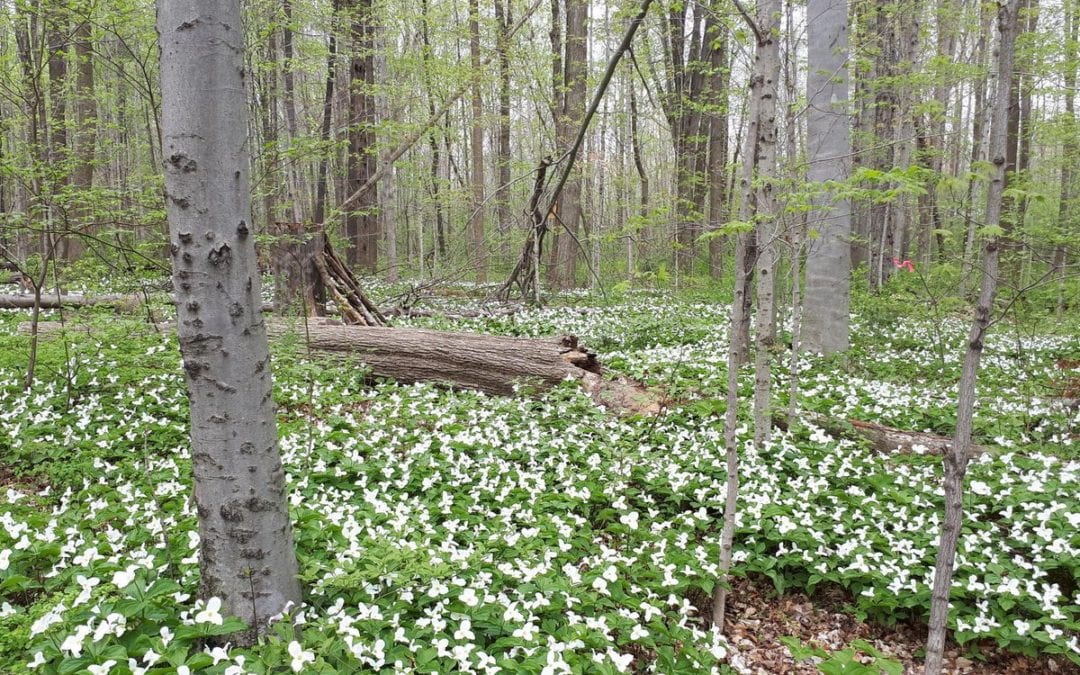By: Lisa Briggs | May 1st, 2019
After a winter of brutally cold temperatures, we gardeners hold our collective breath until the first green shoots of spring poke through the wet soil. And then, to add insult to injury, these fragile perennial plants and very early blooming trees had to cope with Saturday’s onslaught of sleet, snow and a 25-degree night. It seems miraculous that we didn’t wake up on Sunday morning to find all of those tender shoots and blossoms completely frozen. The experience proved to me that some of the most delicate looking plants in the garden can be the most tenacious. These are our precious spring ephemerals.
The definition of ephemeral is “lasting for a very short time”. I like the word fleeting. These amazing, often native, wildflowers complete their life cycles in the couple months between snowmelt and tulip time. In their habitats, they must emerge, flower, be pollinated and produce seeds before the forest floor becomes too shaded.
One of the daintiest and earliest blooming is one of my favorites, Bloodroot. I’m sure that the red-orange juices that flow from broken roots and stems inspired the common name. Emerging in early to mid-April, the white daisy-shaped flowers push through the ground cloaked in pale lobed leaves. As the flower opens, the leaf unfurls to show off its intricate shape.
Another early bloomer is Dutchman’s Breeches, named for the whimsical pantaloon-shaped flowers. Large drifts of Dutchman’s can be quite showy even though the individual flowers are tiny. They adapt to a multitude of environments, from shady woods to rock outcroppings.
Perhaps the most recognized spring wildflower is the Trillium. The large showy flowers are white, red or yellow depending on the species. Trilliums are very slow-growing, so be patient if you are trying to introduce them to your garden. It could take a few years before they bloom, and another few before they start to multiply. I planted some 3-year old bare root plants in 2016 and this is the first season that they are starting to form multi-stemmed clumps.
The flowers of early spring blooming trees can look as delicate as those of woodland wildflowers. One of the very first to bloom is the Vernal Witch-hazel. The sulfur-yellow sepals uncurl around a very small, petal-less flower as early as late February or early March. On very cold days, the sepals will roll back up to avoid damage from freezing temperatures, a talent that I often wish I had.
The Corneliancherry is not a native to the US, but its fringed, yellow flowers bloom before lawns start to green up and it helps to remind me that warm sunshine is sure to follow sooner or later. Site this adaptable little tree in front of some deep green evergreens where the golden flowers will sparkle. And if you have room for two, you’ll be rewarded with bright red, edible berries in mid-summer.
But my favorite early blooming tree has got to be the snow white-blossomed Serviceberry. I have had one in every personal garden that I’ve planted, and am so sad that my current yard is overshadowed by a neighbor’s Black Walnut. The Serviceberry is named because the trees bloom around the same time that Appalachian Mountain passes are clear of snow. Back in the day, the itinerant preachers finally able to reach villages isolated by winter and perform church services. Like the Cornelian cherry, Serviceberries produce an edible summer fruit.
To be a perennial gardener in our climate requires great faith in your plant choices. And these tenacious plants offer a reward for outlasting the winter weather. Plant a few in a shady spot and next spring you might be like me, giddily crawling about your garden, waiting for the ephemerals to proclaim that spring is finally here.

